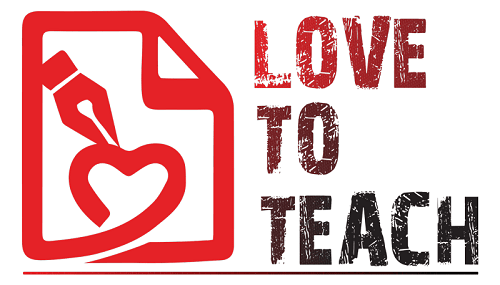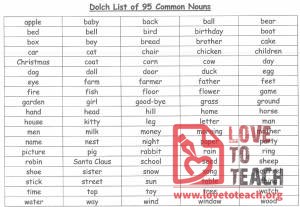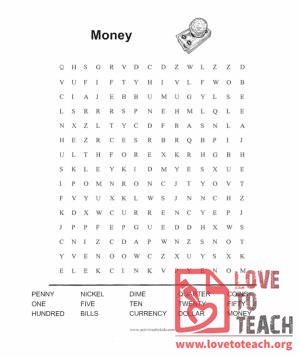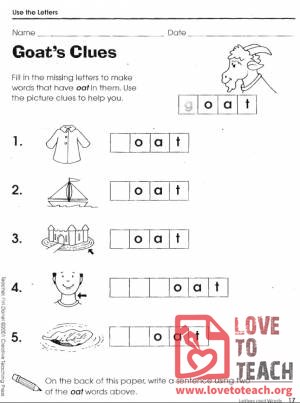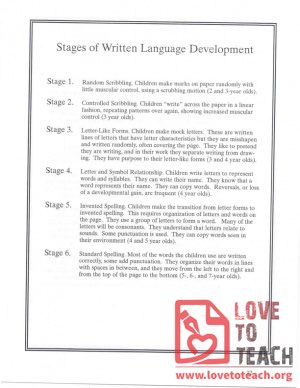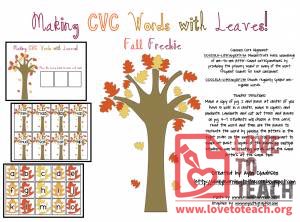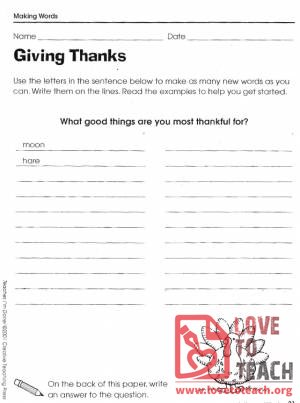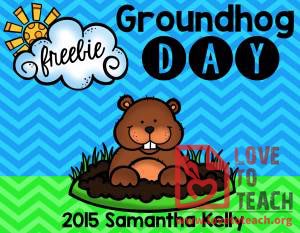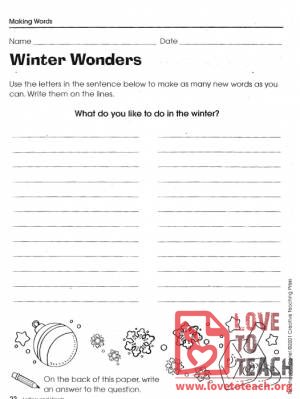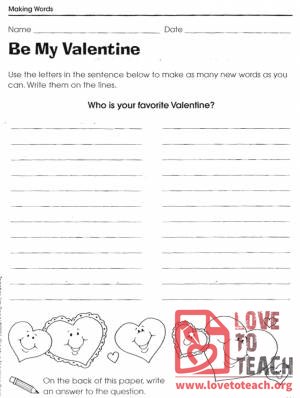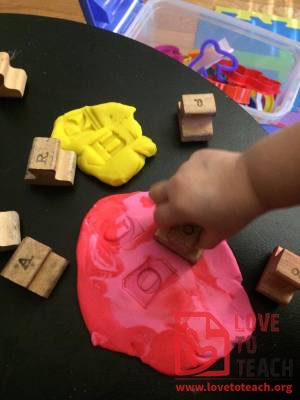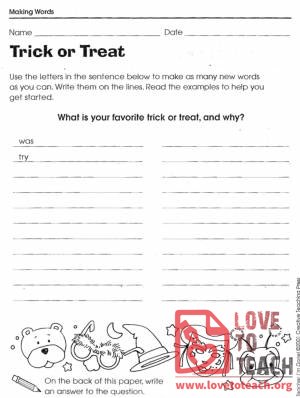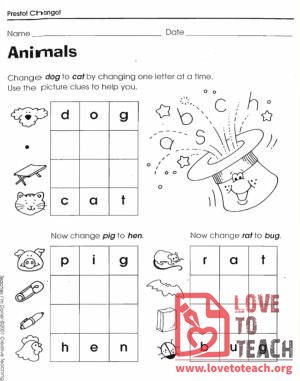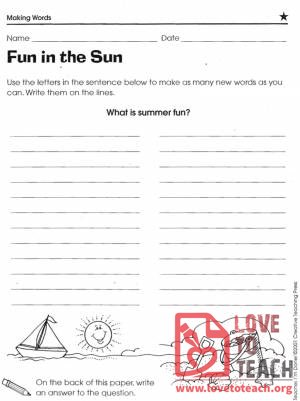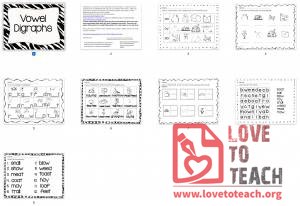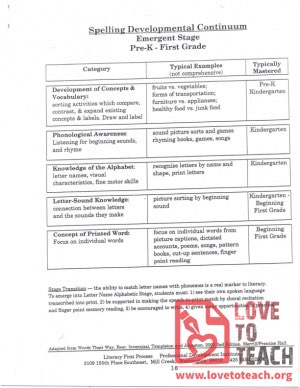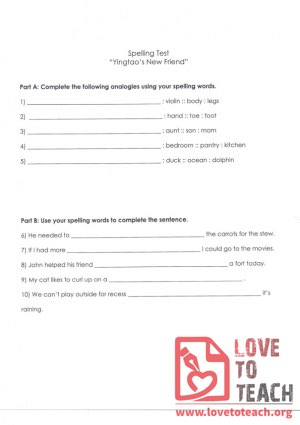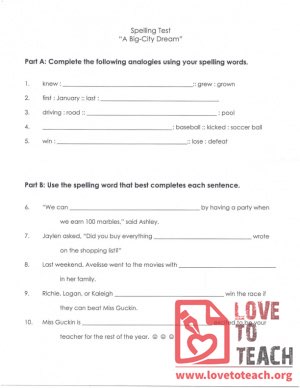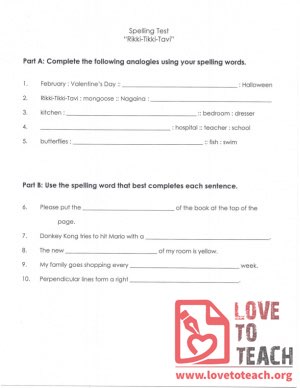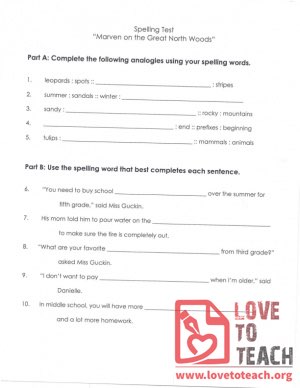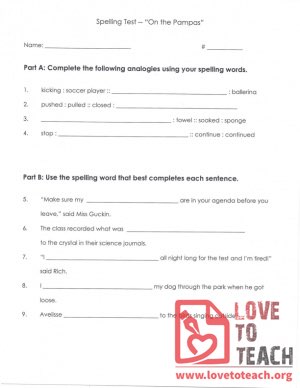Spelling
A list of 95 common nouns that will help students avoid common spelling mistakes.
Have children practice spelling digraph words with these three different word building activities. 8 free digraph worksheets included to print and practice at home.
Stages of Writing & Language Development:
Stage 1. Random Scribbling.
Children make marks on paper randomly with little muscular control, using a scrubbing motion (2 and 3-year olds).
Stage 2. Controlled Scribbling.
Children "write" across the paper in a linear fashion, repeating patterns over again, showing increased muscular control (3 year olds).
Stage 3. Letter-Like Forms.
Children make mock letters. These are written lines of letters that have letter characteristics but they are misshapen and written randomly, often covering the page. They like to pretend they are writing, and in their work they separate writing from drawing. They have purpose to their letter-like forms (3 and 4 year olds).
Stage 4. Letter and Symbol Relationship.
Children write letters to represent words and syllables. They can write their name. They know that a word represents their name. They can copy words. Reversals, or loss of a developmental gain, are frequent (4 year olds).
Stage 5. Invented Spelling.
Children make the transition from letter forms to invented spelling. This requires organization of letters and words on the page. They use a group of l~tters to form a word. Many of the letters will be consonants. They understand that letters relate to sounds. Some punctuation is used. They can copy words seen in their environment (4 and 5 year olds).
Stage 6. Standard Spelling.
Most of the words the children use are written correctly, some add punctuation. They organize their words in lines with spaces in between, and they move from the left to the right and from the top of the page to the bottom (5-, 6-, and 7-year olds). Revising and editing.
Children practice spelling CVC words with this leaf-themed activity.
This worksheet challenges students to make as many words as they can using the letters from "What good things are you most thankful for?"
A great way to review CVC words with large group, small group, and independent activities.
Challenge your students to make as many words as they can using the letters from "What do you like to do in the winter?"
Challenge students to use the letters from "Who is your favorite Valentine" to create as many words as they can!
Now that G is (almost) 3, I'm trying to stimulate her interest in learning letters!
Use the letters from "What is your favorite trick or treat, and why?" to make as many new words as possible.
This bundle lets children manipulate words and practice the magic of spelling while reinforcing letters and their sounds.
Use the letters from "What is summer fun?" to make as many new words as possible.
Review tricky vowel sounds and spelling with this packet. Includes
Development of concepts and vocubulary, phonological awareness, knowledge of the alphabet, letter-sound knowledge, concept of printed word, blends and digraphs, short vowels in word families, basic CVC pattern for short vowel, consonant blends and digraphs in word families, preconsonantal nasals, long vowel patterns, vowel digraph patterns, R-controlled vowels, diphthongs and vowel digraphs, complex consonant and vowel patterns, complex consonant clusters.
A spelling test to go with the story Yingtao's New Friend.
Spelling test to accompany "A Big City Dream" - analogies, complete the sentence
The Rikki-Tikki-Tavi spelling test is used to test the students on their knowledge on the spelling words from the book.
Example:
Leopards : spots :: ________ : stripes
Includes Answer Key
Different spelling activities for students to complete on the story On the Pampas.
